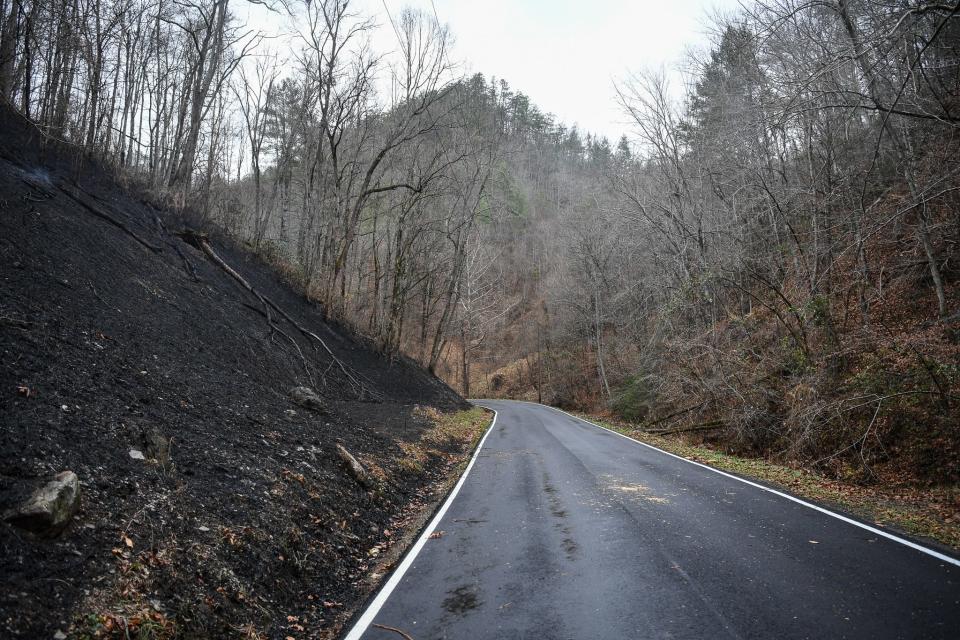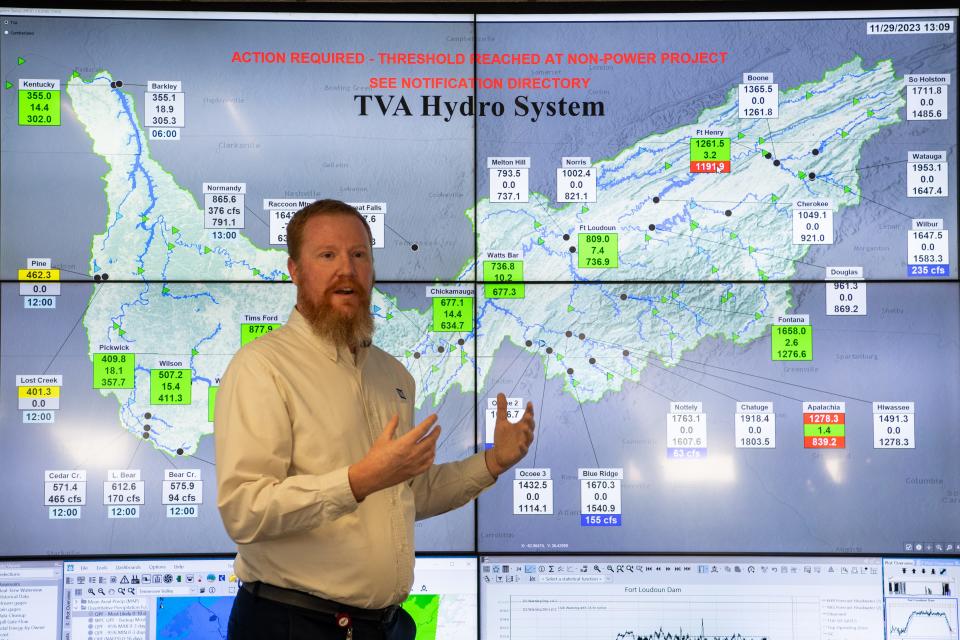There's an extreme drought across East Tennessee. Why hasn't the rain fixed it?
The latest batch of weekly data from the U.S. Drought Monitor shows much of East Tennessee is experiencing extreme drought conditions, but you wouldn't know it from looking outside.
When new drought data is released Dec. 7, it may show the weekend's rain ended the severe drought conditions in Knox County and surrounding communities. But rain doesn't guarantee the drought has passed.
On Dec. 2, Knoxville got 2.5 inches of rain, a practical downpour when compared with the measly 1.07 inches of rain the region got from Sept. 1 to Nov. 15. That period was the driest 10 weeks on record, according to the National Weather Service.
Leaves are piled in wet clumps and fog is hanging in the air. So why are we still in a drought?
Because droughts occur largely underground, even if they can cause very visible problems like November's wildfire outbreaks.
How to know if East Tennessee is in a drought
Droughts can end when it rains or snows, but it can take a lot of precipitation to soak the ground or run into the watershed. In addition to rainfall, the U.S. Drought Monitor also tracks metrics like streamflow, soil moisture and reservoir level.
The monitor releases a new map of Tennessee every Thursday morning at 8:30 a.m. Data from Nov. 30 showed there was no longer "exceptional" drought in East Tennessee, thanks to some scattered rainfall around Thanksgiving, though extreme or severe drought persists.
About half of Knox County and Anderson County, and all of Roane County and Blount County, were in "extreme" drought late last week.
The monitor measures droughts in five severity levels, from "abnormally dry" to "exceptional drought." September typically kicks off the dry season in East Tennessee, though severe droughts can persist if precipitation doesn't pick up again heading into the new year.
Because the ground was so dry in September and October, scattered showers in November were not enough to saturate the ground and improve fire risk.
The worst drought on record in Tennessee stretched from late 2007 to early 2008. Data going back to 1895 shows that droughts do not appear to be worsening over time in Tennessee, a spokesperson for the National Integrated Drought Information System told Knox News.
From year to year, there is great variation in rainfall averages, though Knoxville typically sees around 52 inches a year, a generous annual dousing aided by heavy rain over the Smoky Mountains.
So far in 2023, Knoxville has received about 41.5 inches of rain, according to National Weather Service data. In the record drought of 2007, the city got fewer than 34 inches all year.
TVA controls water levels during droughts
From the River Forecast Center at its headquarters near Market Square, the Tennessee Valley Authority, the nation's largest public power provider, monitors its 49 dams and 650 surface acres of reservoir water across the Tennessee River.
When droughts come, TVA becomes conservative with how much water it lets out of the reservoirs. Right now, the reservoirs in TVA's system are about 10% above their normal operating water level for this time of year, said Darrell Guinn, the center's senior manager.
Keeping reservoir levels high is an insurance policy for the water supply in case rainfall doesn't return to its normal levels heading into spring. The Tennessee River basin has only gotten a month's worth of rain in the last three months, Guinn said.
Knoxville residents aren't likely to notice the effects of the drought on reservoirs because TVA controls water flows along the river.
"We're drawing these reservoirs down towards their winter level, and that's typical for this time of year, whether it rains or not," Guinn said. "You're seeing pretty normal flows in the river system compared to normal years."
In flood conditions, TVA spills water through its dams. In drought conditions, the solution is more complicated. Keeping extra water in reservoirs means less power generated by TVA's 29 hydroelectric dams.
It also runs the risk of a flood in the event of a big rainfall, since there is more runoff during the winter months, when the ground is harder and there are fewer leaves to capture water.
But if the agency doesn't store up water, its levels could sink dangerously low if a drought stretches into the spring, like it did in 2008.
"Springtime would be a time of year when we're filling up reservoirs and if we haven't returned to a normal rainfall pattern by the spring, we're going to see a much more delayed fill," James Everett, a manager at the center, told Knox News.


The center meticulously tracks water levels on either side of dams, as well as the flow of water through turbines at hydroelectric dams. On Nov. 29, around 75,000 gallons of water were rushing through Watts Bar Dam each second.
TVA shares tips for conserving water
Even though Knoxville got some rain over the weekend, it's never a bad idea to use less water when drought conditions persist.
Here are some water conservations tips shared by TVA:
Wash dishes in your Energy STAR-rated dishwasher. Washing by hand uses an average of 27 gallons of water per load versus 3 gallons in your energy/water efficient dishwasher.
Install a water-saving showerhead and take quick showers. An average shower uses 10 gallons of water.
Capture the water at your sink or shower as you wait for it to warm up or install an instant hot water heater.
Turn off the faucet when brushing your teeth or washing your face.
Install low-flush toilets, which can reduce water consumption by up to 30%.
Make sure to fully load the washer before washing clothes.
Test for and fix internal leaks: dripping faucets, hoses, sprinklers and showerheads.
Reduce the number and length of times you run your sprinkler system.
Plant a native garden to save up to a 1/3 of the water used to maintain your lawn. Native flowers, bushes and grass not only require less water but also attract pollinators and enhance overall biodiversity.
Clean your vehicle at a commercial car wash that recycles water.
Daniel Dassow is a growth and development reporter focused on technology and energy. Phone 423-637-0878. Email daniel.dassow@knoxnews.com.
Support strong local journalism by subscribing at knoxnews.com/subscribe.
This article originally appeared on Knoxville News Sentinel: Is East Tennessee in a drought? Dry Knoxville weather continues

